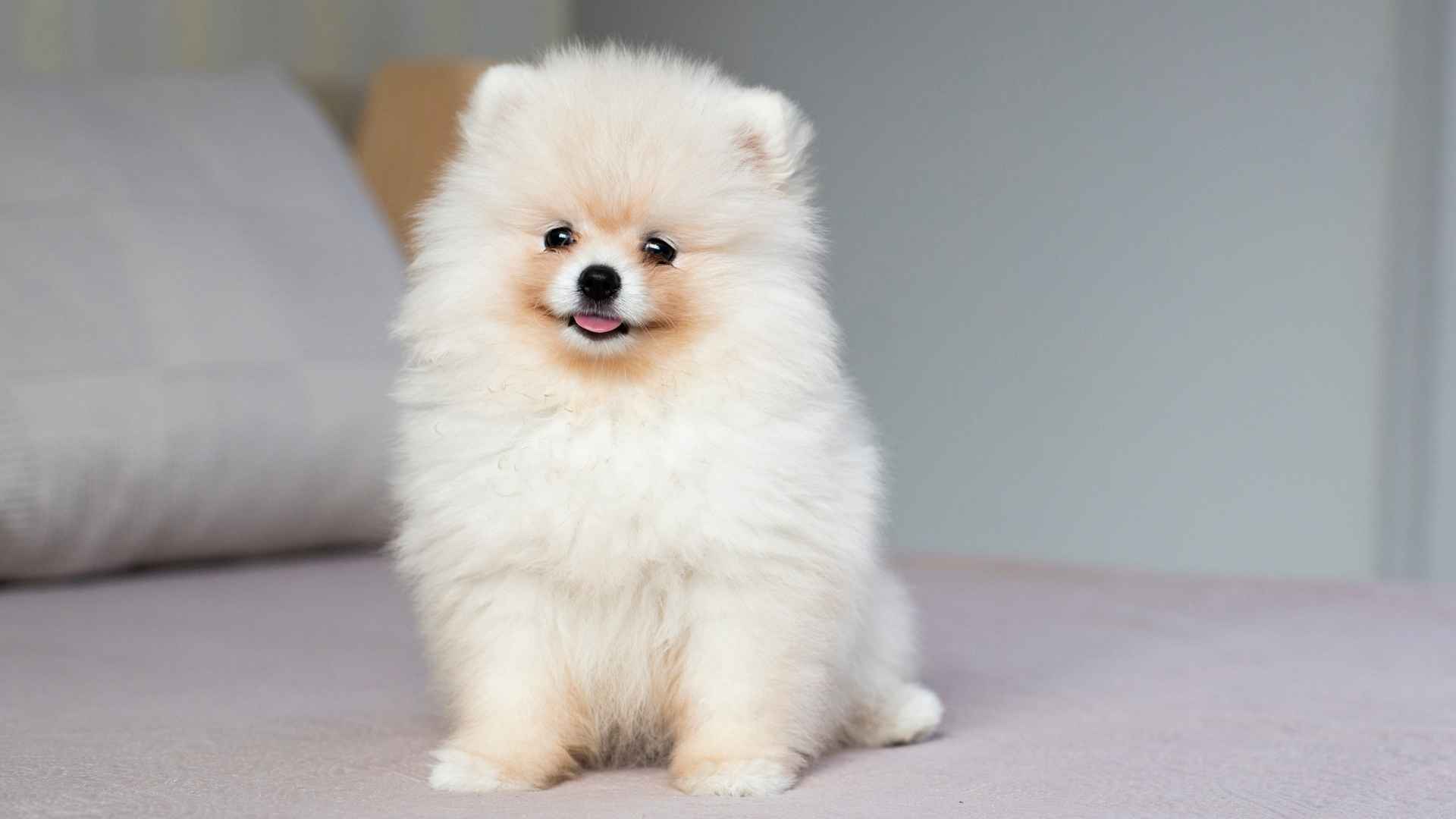Dogs have an incredible way of lifting our spirits, especially when they flash that heart-melting “smile.” While experts still debate whether dogs truly smile the way humans do, many breeds naturally appear to grin when they’re feeling content and relaxed. These cheerful expressions, often paired with wagging tails and sparkling eyes, are enough to brighten anyone’s day.
Scientifically, a dog’s smile is usually a relaxed body posture combined with an open mouth, pulled-back lips, and a lolling tongue—often a result of joy or physical exertion. While it may not be an emotional smile like ours, it certainly signals that your pup is happy and comfortable in your company. Some breeds, thanks to their facial structure and temperament, are more prone to these “smiley” looks than others.
In this article, we’ll spotlight the dog breeds that are not only joyful companions but also known for wearing their happiness on their faces. Get ready to meet the pups whose grins are as genuine as the joy they bring.
Dog Breeds That Smile When They’re Happy
1. Papillon

The Papillon, also known as the Continental Toy Spaniel or “Epagneul Nain,” is a toy breed that hails from France, dating back to the 16th century. Distinguished by its elegant butterfly-like ears—hence the name “Papillon,” French for butterfly—this breed combines dainty stature with a lively spirit.
Typically weighing between 4 to 10 pounds and standing 8–11 inches tall, the Papillon sports a plumed tail and a silky, full coat in combinations of white with black, tan, or red markings. WebMD states that they are especially popular at dog shows due to their long, silky coats, elegantly plumed tails, and their captivating, graceful movements.
A member of the Toy Group, it boasts an impressive life span of 13 to 16 years, making it a long-term companion for those lucky enough to call it family.
Temperament
Despite its petite frame, the Papillon is known for its athleticism, high intelligence, and joyful personality. It radiates affection and cheer, often seen flashing a tiny, endearing smile, especially during play or cuddle sessions.
These affectionate dogs thrive on human interaction and form strong bonds with their families, including children and even other dogs. They adapt well to various environments and rarely exhibit nervousness when properly socialized. Eager to learn and quick to please, these dogs excel in obedience training and love showcasing their tricks.
Fun Fact: Papillons have been immortalized in paintings by masters like Titian and Rubens, often shown beside European royalty.
2. Alaskan Malamute
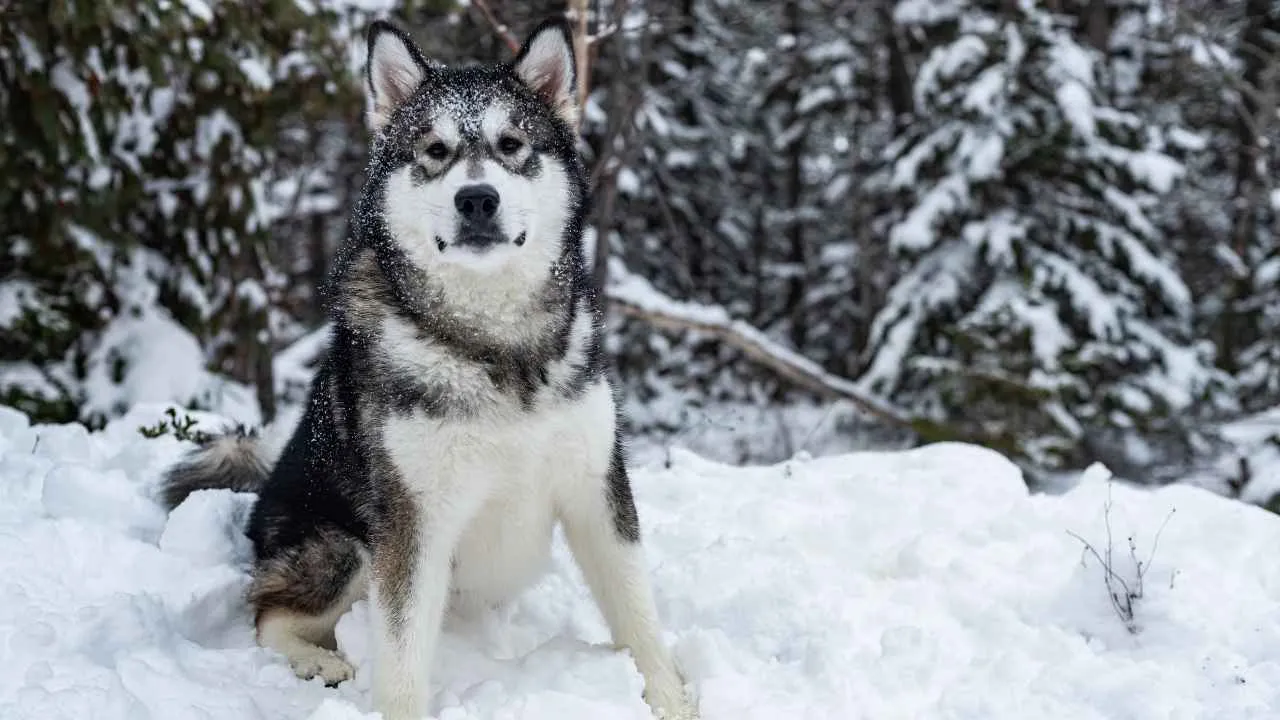
Originating from the Arctic and developed by the native Malemiut people of Alaska, the Alaskan Malamute—often affectionately called the “Mal”—is one of the oldest sled dog breeds in existence.
This sturdy working breed belongs to the Working Group and stands between 23 to 25 inches tall, weighing 75 to 85 pounds. According to Britannica, it has a thick coat that is typically gray and white or black and white, often featuring caplike or masklike markings on the head.
Their broad head, erect ears, and sweeping plumed tail contribute to their majestic appearance. With a lifespan of 10 to 14 years, the Alaskan Malamute continues to be both a hardworking freight dog and a lovable family companion.
Temperament
Despite their wolf-like stature, Alaskan Malamutes are known for being affectionate with a playful nature and a friendly attitude, especially with children. They thrive in social environments and are deeply loyal to their human “pack.” However, their independent streak can make training a bit of a challenge.
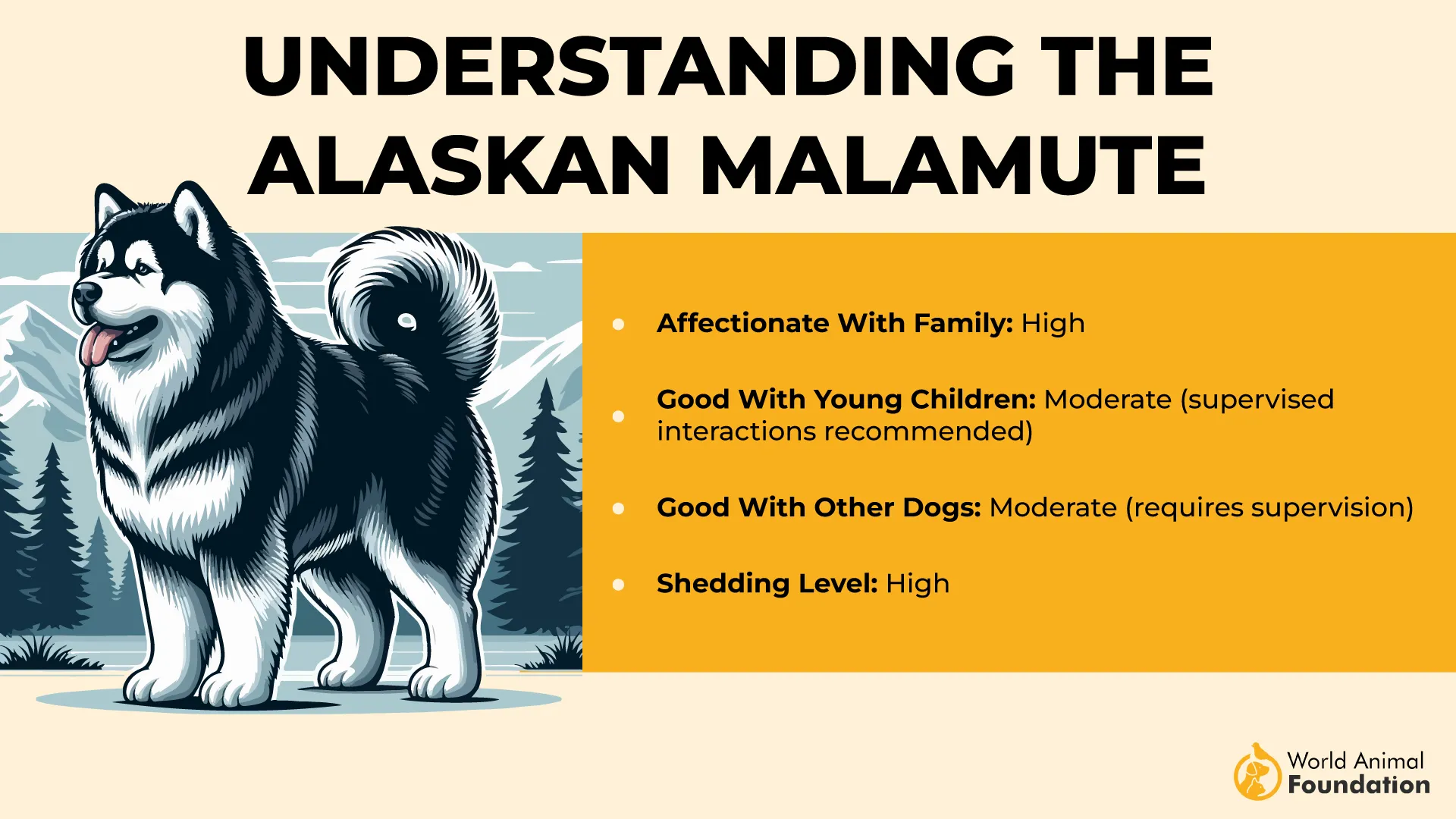
Consistent, firm, and early training is essential, especially as they may exhibit strong-willed behaviors like digging. While not typically aggressive, they may be aloof with strangers and require proper socialization. Their expressive, wide, open-mouthed “smile” often reflects their upbeat, work-hard-play-hard personality.
Fun Fact: The Star Wars character Chewbacca was inspired by George Lucas’s own Alaskan Malamute named Indiana.
3. American Eskimo Dog
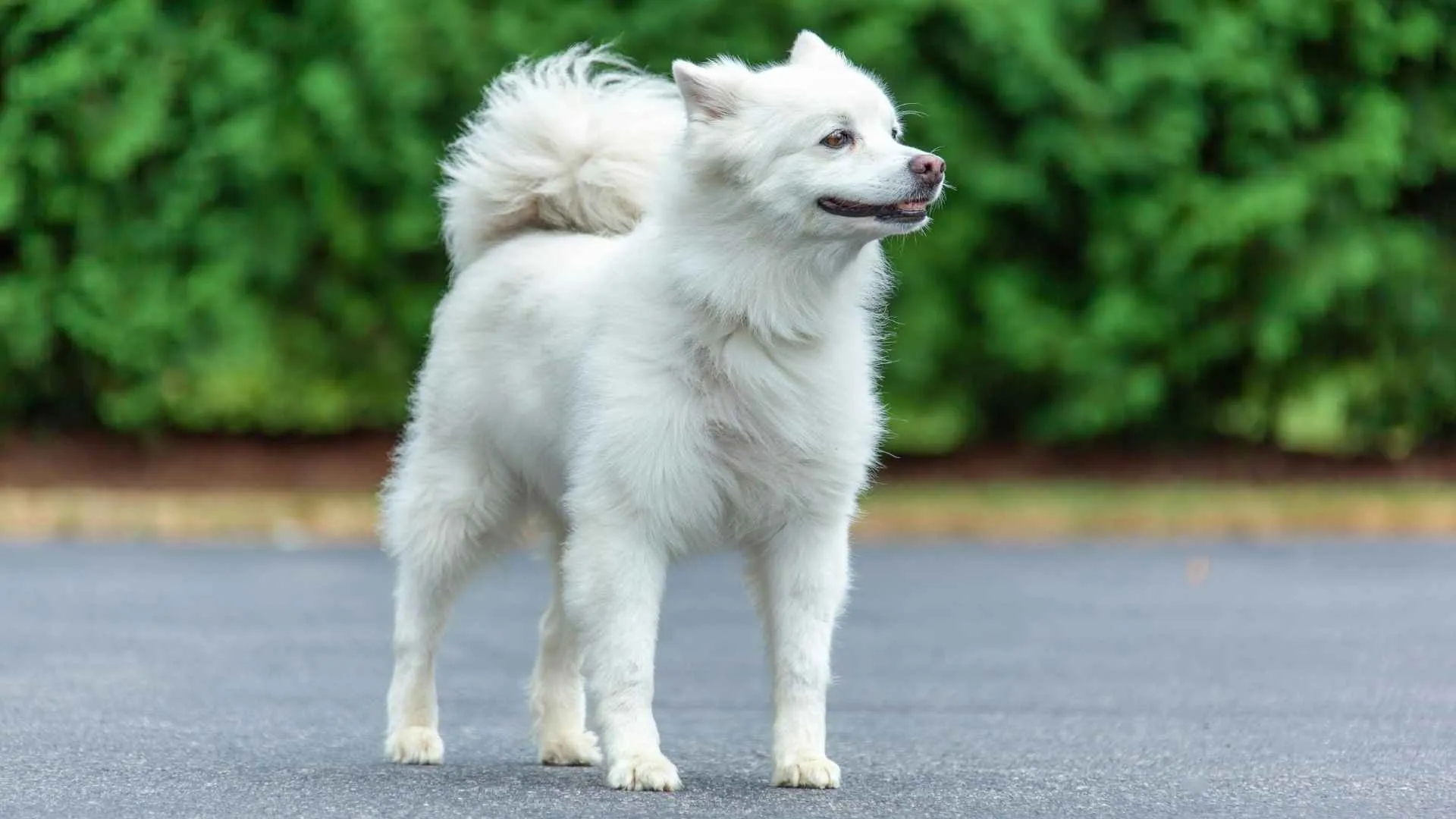
With its stunning white coat and ever-cheerful demeanor, the American Eskimo Dog—often affectionately called the “Eskie”—is a breed that naturally wears a smile. Originating from the German Spitz lineage, this non-sporting breed was refined in the United States and famously performed as a circus dog in the early 20th century.
It comes in three size varieties: toy (up to 10.5 inches), miniature (up to 13.5 inches), and standard (up to 17 inches), with weights ranging from 8 to 30 pounds depending on size. Eskies are easily recognized by their bright white double fluffy coat, alert triangular ears, expressive black eyes, and plumed tail curled gracefully over their back.
Temperament
American Eskimo Dogs are affectionate and highly sociable. According to the AKC, they are loyal and intelligent dogs. They thrive on companionship and love being included in family activities. These dogs are playful and eager to learn, making them ideal candidates for obedience and trick training.
Their cheerful nature and expressive faces often give the impression of constant smiling, further enhanced by their bright eyes and slightly upturned mouths. Eskies are quick learners but may develop nuisance behaviors like excessive barking if left alone for too long without mental and physical outlets.
Fun Fact: The American Eskimo Dog’s expressive “smile” and intelligence made it a favorite circus performer in the early 1900s.
4. Australian Kelpie
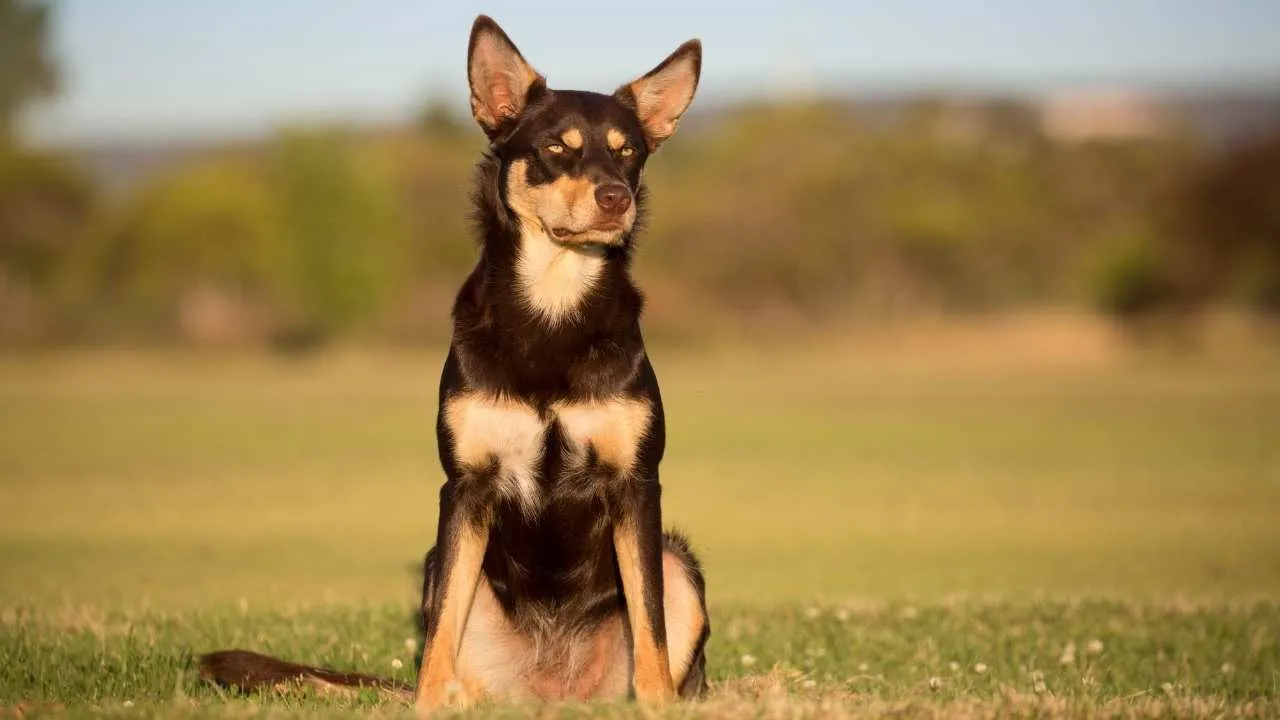
Bred for endurance and agility, the Australian Kelpie—sometimes referred to as the Barb—is a medium-sized herding dog renowned for its work ethic and signature smile-like expression. Originating in the late 19th century from British imports, the breed became firmly established after a sheepdog named King’s Kelpie won a major herding trial in the 1870s.
Adult males typically stand between 20–23 inches tall, with females at 17–20 inches, and they weigh around 25–45 pounds. Kelpies boast a short, smooth coat in colors such as black, red, tan, fawn, or blue, with erect, alert ears and expressive, intelligent eyes. Their slightly upturned mouths and energetic demeanor often make them appear to be perpetually smiling.
Temperament
Energetic, loyal, and cheeky, the Australian Kelpie is brimming with personality. These dogs are natural problem-solvers and independent thinkers—traits that allowed them to work unsupervised in Australia’s rugged outback. Kelpies thrive when mentally stimulated and are happiest with a job to do.
They’re quick learners, affectionate with family, and always eager to play or herd. While highly intelligent, their stubborn streak calls for consistent, positive training. Their humor and joyful nature are most evident in social or active settings, reinforcing their place among the most “smiley” breeds.
Fun Fact: The Kelpie’s facial expressions, structure, and lively eyes contribute to their famous “smiling” look, especially during herding or playtime.
5. Belgian Sheepdog
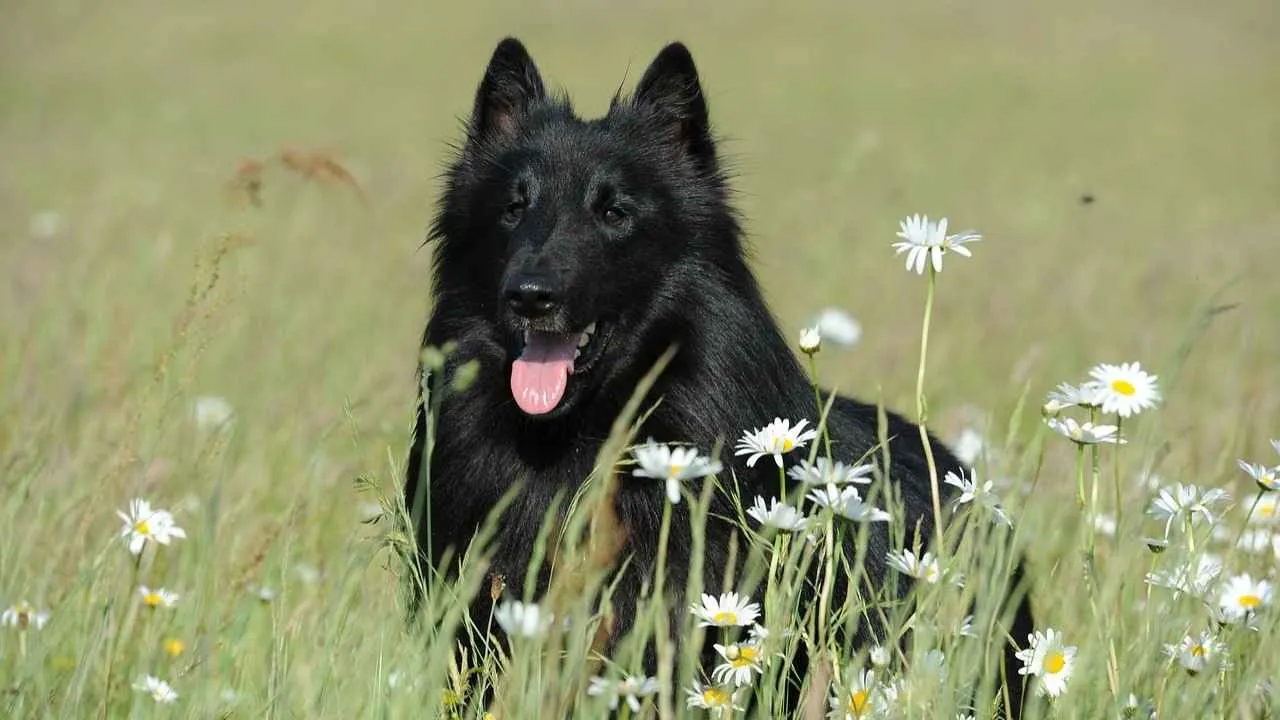
Also known as the Groenendael, the Belgian Sheepdog is a noble working breed developed in 1885 in the village of Groenendaal, Belgium. Originally used for herding sheep and performing military and police work, this breed is distinguished by its long, flowing black coat, sharply pointed muzzle, and triangular, erect ears.
Standing between 22 to 26 inches tall and weighing 50 to 60 pounds, the Belgian Sheepdog is part of the herding group and typically lives 12 to 14 years.
With expressive almond-shaped eyes and a signature “smize”—a smile with the eyes—this elegant dog often looks like it’s grinning, especially when engaged with its favorite people. Agile and intelligent, it thrives in active environments where it can channel its energy into hiking, agility, or advanced obedience.
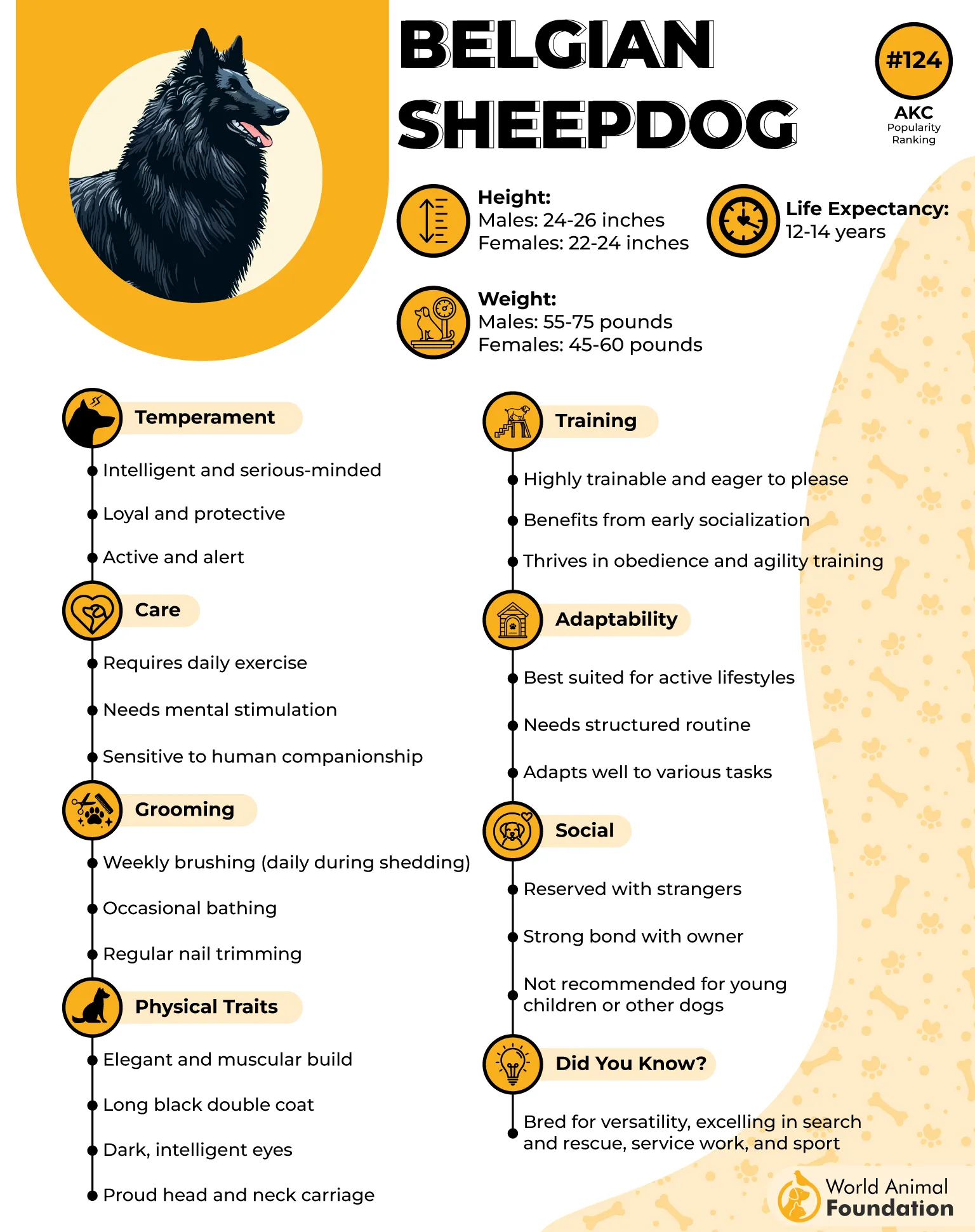
Temperament
Belgian Sheepdogs are sensitive and deeply bonded to their families. They crave human interaction and prefer to be involved in daily activities. This breed is strong yet gentle, with a keen desire to please. While naturally reserved with strangers, they are fiercely loyal and affectionate at home.
Their high intelligence and eagerness make them highly trainable, though they benefit from consistent guidance and plenty of mental stimulation. Their expressive eyes and joyful demeanor make them natural communicators, often appearing to smile when relaxed or engaged with loved ones.
Fun Fact: The Belgian Sheepdog is so expressive, it’s been said they know how to “smize”—smile with their eyes—a term made famous by Tyra Banks.
6. Bichon Frise
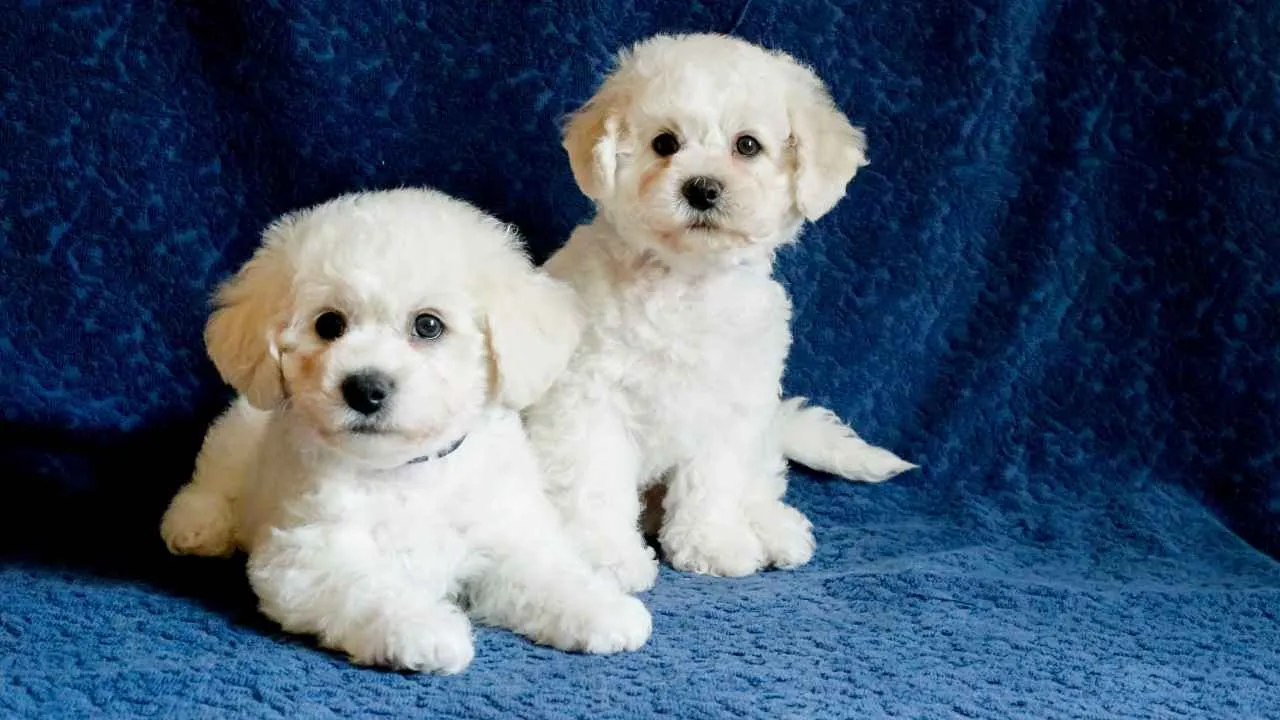
Also known as the Tenerife or simply Bichon, the Bichon Frise is a small, sturdy dog with an unmistakably joyful expression. Originating in the Mediterranean and popularized by European nobility, these pups have charmed royalty and commoners alike for centuries.
Standing about 9.5 to 11.5 inches tall and weighing between 12 to 18 pounds, they boast a plush, white hypoallergenic coat that highlights their expressive black eyes, nose, and lips, giving them a near-constant smiling look. Their average lifespan is 14 to 15 years, and they belong to the Non-Sporting group.
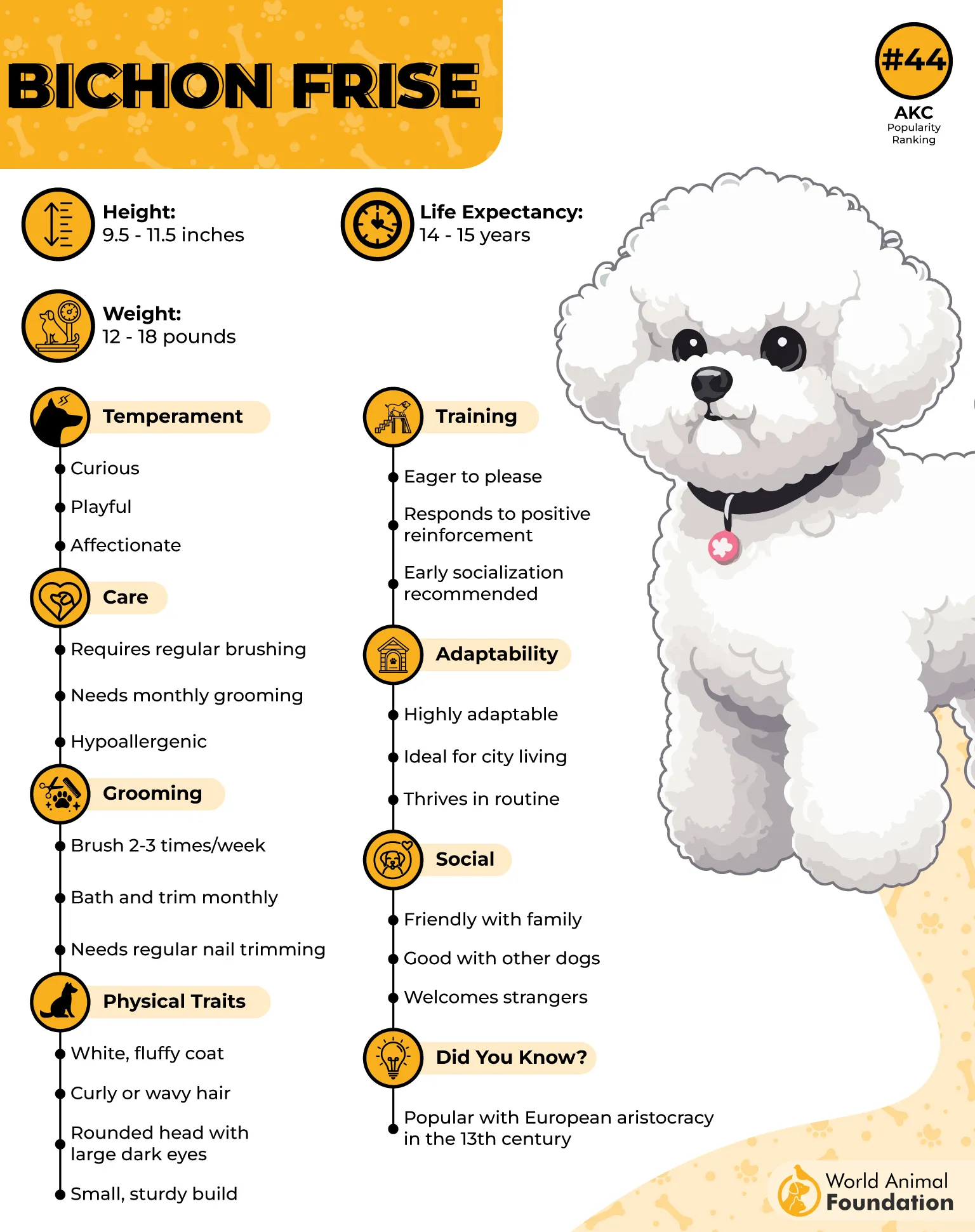
Temperament
Bichon Frises are cheerful, adaptable, and thrive in social environments. Their upbeat attitude, combined with intelligence and playfulness, makes them ideal companions for families and city dwellers alike.
These little comedians love attention and perform tricks with enthusiasm, bringing laughter wherever they go. While friendly with children and other dogs, early socialization helps reinforce their confident, affectionate nature.
Fun fact: The Bichon Frise was so beloved in France during the Renaissance that King Henry III reportedly carried his in a basket adorned with ribbons around his neck.
7. German Spitz
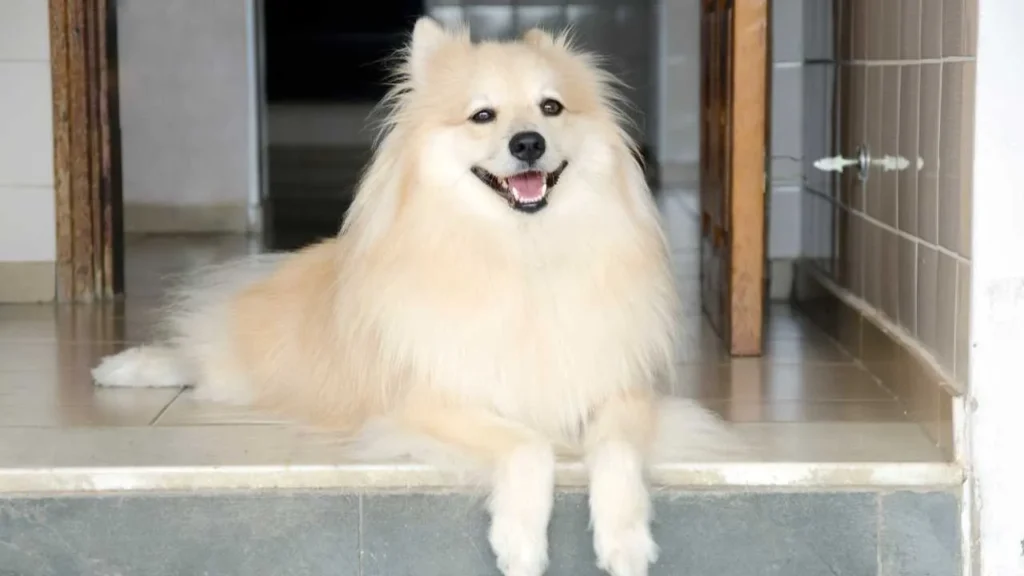
The German Spitz, sometimes confused with its smaller cousin, the Pomeranian, is a delightful, fox-faced breed known for its inquisitive grin and vibrant spirit. Historically used as watchdogs and companions in Central Europe since the 15th century, they come in several size variants—most notably the Klein and Mittel.
Typically standing about 13.5 inches tall and weighing around 25 pounds, these pups are adorned with a plush double coat, curled tail, and bright, alert eyes that amplify their ever-smiling expression. Recognized for their cheerful presence, German Spitz dogs belong to the Non-Sporting Group and can live between 13–15 years with proper care.
Temperament
With a blend of liveliness and affection, the German Spitz thrives on companionship and mental stimulation. They are naturally curious and highly expressive, often seen with a playful sparkle in their eyes and a big smile that hints at mischief.
Their low prey drive and gentle demeanor make them great with kids and suitable for homes with other pets, especially if socialized early. While these smiling dogs may be a bit reserved with strangers, their loyalty and love for their family are unwavering.
German Spitzes are also vocal and alert, making them excellent watchdogs. With consistent positive reinforcement, they’re trainable and eager to engage.
Fun Fact: The German Spitz’s constant inquisitive expression and childlike grin make it one of the most photogenic and smiley breeds in the canine world.
Conclusion
A dog’s smile may not mirror ours exactly, but their joyful expressions speak volumes. While most dogs can appear happy through body language, there are dog breeds that seem to light up with genuine, heartwarming grins. From the famously cheerful Golden Retriever to the expressive German Spitz, these pups reflect joy with every wag, wide mouth, and bright-eyed glance. Science suggests dogs evolved these expressions by observing human behavior, learning that “smiling” earns them positive responses and affection from their favorite family members.
Breeds like the Shiba Inu may have more subtle smiles, while others like the Cavalier King Charles Spaniel wear theirs with soft eyes and an affectionate demeanor. And who could forget the iconic Sammy smile—the signature look of the Samoyed that exudes contentment? These dogs don’t just beam with happiness—they love to show off, learn new tricks, and stay connected to their humans. Their smiles remind us that joy truly is a shared emotion.


